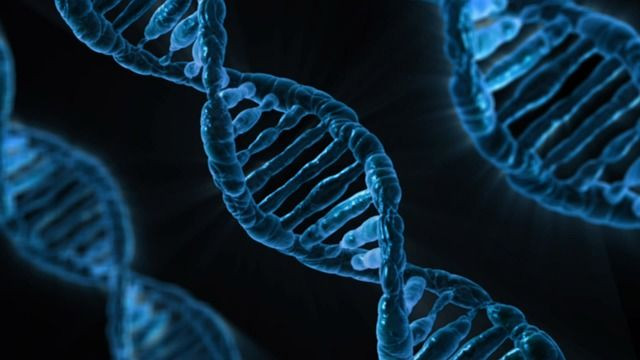Genetic Mutations, Explained; You’re Probably A Mutant, But It’s A Far Cry From X-Men

Extra appendages. Super powers. Deformities so horrific you have to avert your eyes. The word "mutations" can bring a number of strange and fascinating images to mind, but in reality the science behind genetic mutations is far less supernatural, yet just as interesting.
Essentially, we are what our DNA says we are, and each molecule of DNA has the complete instruction manual for what ingredients are necessary to create us. But while we can think of DNA as the cookbook to who we are, genes are the individual recipes inside. They are the true building blocks of life, and tell cells and proteins what to do and how to do it. Our genes determine everything from what color your hair should be to how tall you will eventually grow, and slight variations and expression in genes are what cause differences among us all.
Genetic mutations are random deviations from the set of instructions. They can be inherited, occur shortly after conception, or be acquired later on in life, but despite what you may have seen in the latest superhero film, genetic mutations are hardly the result of radiation exposure or of getting bitten by a poisonous spider.

How Do Mutations Occur?
Whether it occurred in a test tube or in the back of your dad’s pickup truck, the moment of your conception was truly wondrous. Here, 23 of your father’s chromosomes combined with 23 of your mother’s to create the necessary 46 chromosomes needed to make a complete cell — your first cell, to be specific. It was this single cell, also called a fertilized egg, that grew to eventually become you.
While making your very first cell was no small feat for your parent, it would take a whole lot more cells to actually form a complete human. This is where cell division comes in. About 12 hours after conception, cell division begins. The fertilized egg duplicates all of its chromosomes and splits to form two identical cells. One cell turns into two, two into four, four into eight, and so on as the fetus grows.
Cells divide countless times, and sometimes a mistake can occur as the DNA copies itself in preparation to split. This mistake is called a genetic mutation, and it is truly something to behold. As this single mutated cell undergoes cell division itself, its mutation will copy and spread. The effect of the mutation varies, depending on the specific mutation and how many cells are affected. Some mutations are beneficial to an organism and help aid in survival. Others are dangerous or even life threatening. Most, however are neutral and cause no dramatic changes in health or appearance.
Mutations do not only occur during cell division at conception. They can also be inherited from a parent or be caused by environmental factors later in life.

Super Powers? Not So Much
Now that we know how we get mutations, let’s discuss what happens when you’re lucky (or unlucky) enough to have one. Many common physical traits actually got their start as random genetic mutations. A popular example of this is the genetic mutation that causes blue eyes. The human genome is programmed to develop a pigment called melanin in the eyes, but around 6,000 to 10,000 years ago one man was born with a mutation that shut off the production of melanin in the eye. The result was a completely colorless eye. However, as light enters the eyes and bounces back scattered into the atmosphere, it causes us to view it as blue — a phenomena known as the Tyndall effect.
Now, having blue eyes makes pretty much no difference to one's health other than making them slightly more sensitive to sunlight, as the melanin in the eyes acts as a natural sunscreen. Still, the mutation spread like wildfire, and geneticists aren’t completely sure why; it may simply be that our ancient ancestors found blue peepers just as attractive as we do today.
Other genetic mutations are far less coveted. For example, cystic fibrosis, a life-threatening disease, is caused by a genetic mutation that causes the buildup of thick mucus in and around the lungs, pancreas, and other internal organs. For a person to develop the disease, both parents must carry this defective gene and pass it on to their offspring. And while this is rare on a global perspective, humans tend to live in close-knit communities and rarely mate with individuals from another part of the world. For this reason, according to Cystic Fibrosis News Today, the mutation has stayed particularly common among certain populations, such as white people of Northern European descent and Latinos and American Indians, especially the Pueblo and Zuni.
Disease-causing genetic mutations are more common in certain populations for the same reasons that they tend to be uncommon in the general population.
We’re Still Mutating!
Mutations are random, but if their effect does not inhibit an organism’s ability to reproduce, or is even beneficial, they can spread throughout a population. For example, a mutation affecting the blood recently found in individuals from the African country Burkina Faso offers protection against malaria, a disease popular in the region. According New Scientist, people with just one copy of these mutated genes are 29 percent less likely to get malaria while those with two copies of the gene are 93 percent less likely to get malaria. Another genetic mutation found in a small Italian community allows individuals to clear plaque buildup in their arteries more effectively, and also prevents damage caused by inflammation, Big Think reported. The result is significantly lower risk for having a heart attack or stroke, the two leading causes of death in the industrialized world.
Mutations have been occurring since the beginning of life, and will likely continue to occur. And though their effects can be equally heartbreaking as they are beautiful, there is no doubt that they are all equally unique.



























